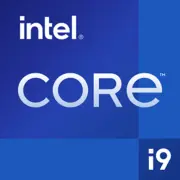Intel Core i9-12900K

インテル コア i9-12900K: 2025年のプロセッサ完全レビュー
アーキテクチャ、性能、ビルドのヒント
主な特長:ハイブリッドアーキテクチャと記録的なクロック周波数
インテル コア i9-12900Kは2021年末に発売され、2025年には独自のハイブリッドアーキテクチャアルダーレイクのおかげでエンスージアストにとって依然として有用です。
アーキテクチャとプロセス
- ハイブリッドコア:16コア(8つのパフォーマンスコアと8つの効率コア)および24スレッド。Pコアは重いタスク(ゲーム、レンダリング)を担当し、Eコアはバックグラウンドプロセスを処理します。
- インテル 7 (10nm Enhanced SuperFin):向上したエネルギー効率とトランジスタの密度。
- クロック周波数:ベース3.2 GHz、Pコアのターボモード最大5.1 GHz。実際のテスト(例:Cinebench R23)では、プロセッサはマルチスレッドモードで27,000ポイントに達します。
- キャッシュ:30MB L3がリソース集約型アプリの遅延を低減します。
- インテル UHD グラフィックス 770:オフィス作業用の基本的なグラフィックスですが、ゲーム用ではありません。
主な特徴:
- インテル スレッド ディレクター:Windows 11におけるコア間のタスク割り当てを最適化します。
- PCIe 5.0のサポート:PCIe 4.0の倍の帯域幅 — 新世代SSDやグラフィックスカードに適しています。
対応マザーボード:LGA 1700ソケットとチップセット
プロセッサはLGA 1700ソケットを使用し、Z690、H670、B660、H610のチップセットをサポートしています。
選択の推奨
- オーバークロック用:チップセットZ690/Z790(例:ASUS ROG Strix Z790-E、価格約$350)。
- ノンオーバークロック用:B660(MSI MAG B660 Tomahawk、約$180) — 大多数のユーザーに最適。
- 特徴:
- グラフィックスカード用のPCIe 5.0 x16およびNVMe用のPCIe 4.0 x4。
- 一部のボードはDDR4およびDDR5をサポート(選択は予算による)。
実際の例:Gigabyte Z690 AORUS Masterボードは、AIO水冷を使用することでi9-12900KをPコアで5.3GHzにオーバークロック可能です。
対応メモリ:DDR4 vs DDR5
プロセッサは両方のメモリタイプに対応していますが、いくつかの注意点があります:
- DDR4-3200:安価(32GB約$90)ですが、帯域幅に制限があります。
- DDR5-6000:高価(32GB約$150)ですが、レンダリングなどのタスクでの性能は向上します(Blenderでは15%以上)。
アドバイス:ゲームでは差は最小限(1-3% FPS)ですが、プロフェッショナルにはDDR5が有利です。
電源ユニット:電力計算
TDP 125Wに対して、負荷時の実際の消費電力は250Wに達します(オーバークロック時)。
推奨:
- ディスクリートグラフィックスカードなし:500W。
- グラフィックスカードを使用する場合(例:RTX 4080):850〜1000W(Corsair RM850x、約$140)。
- 基準:80 Plus Gold/Platinumの認証、モジュラーケーブル。
注意:安価な電源(例:EVGA 600W)はピーク負荷時に動作しない可能性があります。
i9-12900Kの利点と欠点
利点:
1. 優れたシングルスレッドパフォーマンス(Geekbench 6シングルコア — 2611) — ゲームに最適(Cyberpunk 2077、1440pで144+ FPS)。
2. DDR5とPCIe 5.0のサポート — 将来に備えた余裕。
3. ハイブリッドアーキテクチャ — エネルギー消費の最適化。
欠点:
1. 高温:AIO水冷なし(例:NZXT Kraken X63)では、負荷時に温度が100°Cに達します。
2. 価格:2025年ではプロセッサは約$450、対してRyzen 9 7900Xは$400です。
3. スレッドディレクターの正しい動作にはWindows 11が必要です。
使用シナリオ
ゲーム:
- CPUバウンドなゲームでの最大FPS(CS2、Dota 2)。
- 240Hzモニターとの互換性あり。
作業タスク:
- Blenderでのレンダリングがi9-11900Kより30%速い。
- Premiere Proでの動画エンコーディング — 8Kを12〜15分で処理。
マルチメディア:
- OBS + ゲームのストリーミングがEコアのおかげでラグなし。
競合との比較
1. AMD Ryzen 9 7950X(16コア、32スレッド):
- 利点:マルチスレッドタスクで優れる(Geekbench 6マルチコア — 16,200対Intelの15,434)。
- 欠点:価格が高い($550)、ゲームでは劣る(-7% FPS)。
2. インテル コア i9-13900K:
- 利点:+15%の性能向上だが、価格が高い(約$600)。
結論:i9-12900Kは価格と性能のバランスが取れた選択肢です。
ビルドの実用的なヒント
1. 冷却:最低でもタワークーラー(Noctua NH-D15)、最適なのは280mmのAIO水冷。
2. ケース:良好な通気性(Lian Li Lancool III)と最低3つのファン。
3. BIOSの更新:Windows 11および新しいSSDとの互換性のため。
4. メモリ:予算が限られている場合はDDR4-3600 CL16(G.Skill Ripjaws V)を検討。
結論:i9-12900Kは誰に適しているか?
このプロセッサを選ぶべき人:
- ゲーマー、最高のFPSを望む。
- プロフェッショナル、3Dや動画を扱う。
- エンスージアスト、価格と新しい技術のバランスを重視する。
選択肢:純粋なマルチスレッド作業にはRyzen 9 7950X、コスト削減にはi7-13700K。
2025年にはi9-12900Kは特に中古市場で好ましい選択肢であり(価格約$300)、新しいモデルはエネルギー消費が少なく、より最適化されています。
基本
CPUの仕様
メモリ仕様
GPUの仕様
その他
ベンチマーク
他のCPUとの比較
ソーシャルメディアで共有する
または当サイトへのリンクを追加
<a href="https://cputronic.com/ja/cpu/intel-core-i9-12900k" target="_blank">Intel Core i9-12900K</a>